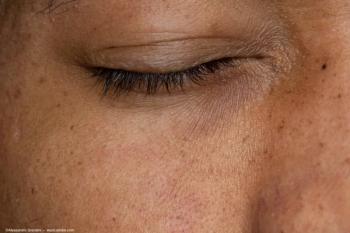
Lab tests, first-line therapy issues key to VKH disease
These observations—together with recent studies that have identified specific auto-antigens in melanin-containing cells—support the idea that VKH disease is an autoimmune disorder.
These observations-together with recent studies that have identified specific auto-antigens in melanin-containing cells-support the idea that VKH disease is an autoimmune disorder.
Treatment choices are often complicated by the chronic, recurrent nature of the inflammation. Early therapy almost always includes a combination of topical and systemic corticosteroids together with a topical cycloplegic mydriatic agent. Longer-term control frequently requires the use of one or more noncorticosteroid immunosuppressive agents to minimize the risk of both corticosteroid-induced side effects and recurrences.
-Emmett T. Cunningham Jr., MD, PhD, MPH
Cristina Muccioli, MD: The diagnosis is easily made based on the clinical ocular findings, especially if the patient presents with the typical ocular findings (exudative retinal detachment, diffuse choroiditis) with the neurologic/auditory and integumentary findings. The lumbar puncture reveals pleocytosis in the great majority of the cases, but only if the test is made in the prodromal phase and at the beginning of the acute phase. In some populations such as the Japanese, the HLA could be of more importance (HLA-DR4 and DQ4 are linked to the Japanese population), but it is not a useful test for the diagnosis, especially because we have to consider the racial variations.
Ultrasonography is useful when looking for choroidal thickening and to do the exclusion diagnosis of posterior scleritis (this presents with the specific T sign that is a very common posterior scleritis finding in the ultrasonography). Fluorescein angiography as well as indocyanine green (ICG) angiography could be very useful to help make the diagnosis.
Emmett T. Cunningham, MD, PhD, MPH: There are no laboratory tests per se for VKH disease. That said, it is essential to rule out other possible causes of panuveitis associated with serous retinal detachment, including sympathetic ophthalmia, posterior scleritis, and choroiditis due to sarcoidosis, syphilis, tuberculosis, and Lyme disease. I typically ask about prior eye surgeries, laser treatments, and trauma; obtain an OCT study to look for shallow serous retinal detachments and choroidal thickening; order an ultrasound study to rule out posterior scleritis; and send the patient for a chest radiograph, a serum angiotensin converting enzyme or lysozyme level, and a purified protein derivative (PPD) level to rule out systemic granulomatous disorders such as sarcoidosis and tuberculosis. In endemic areas or when suggested by a history of tick exposure, erythema migrans, or arthritis, I request serum anti-Lyme titers.
A spinal tap done early in the course of disease often shows pleocytosis consistent with sterile meningitis and may be considered, particularly if the inflammation is severe and the patient is going to be hospitalized for treatment. While the HLA-DR4 haplotype is present in more patients with VKH disease than control patients of similar race, this test is neither sensitive nor specific (i.e., HLA-DR4 is present fairly commonly in unaffected control patients while a sizable proportion of patients with VKH disease are HLA-DR4 negative). For this reason, I almost never request a class II HLA panel when I suspect VKH disease.
Newsletter
Don’t miss out—get Ophthalmology Times updates on the latest clinical advancements and expert interviews, straight to your inbox.


















































.png)


